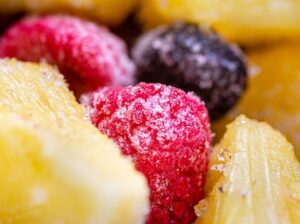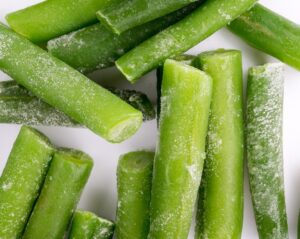 To preserve fruits and vegetables with maximum nutritional value year round, try freezing them. It’s Easy! And if you’re anything like me, you love all the fresh fruits and vegetables that are available during the summer. You might have your own home garden or purchase your produce from a local farmers market like I do. Wherever you get your produce, it’s always unfortunate when the weather changes and they are no longer available. However, a great way to have high quality fruits and vegetables with maximum nutritional value is by freezing them.
To preserve fruits and vegetables with maximum nutritional value year round, try freezing them. It’s Easy! And if you’re anything like me, you love all the fresh fruits and vegetables that are available during the summer. You might have your own home garden or purchase your produce from a local farmers market like I do. Wherever you get your produce, it’s always unfortunate when the weather changes and they are no longer available. However, a great way to have high quality fruits and vegetables with maximum nutritional value is by freezing them.
Freezing fresh fruits is an easy way to have ready to use fruits all year. This is the least time-consuming way to preserve fruits.
Tips for freezing fruits:
- Prepare fruits so they are ready to eat (peel, slice, and pit fruit when needed).

- Freeze cherries and berries quickly after harvest.
- Fruits like apples, pears, apricots, or peaches need to be fully ripened before freezing. Add ascorbic acid to preserve the color, flavor, and nutrients of the fruit. Ascorbic acid can be purchased from stores where canning supplies are sold.
- Choose the correct method for packing.
- Fruits can be frozen dry, in syrup or with sugar.
- Freeze berries and cherries on a baking sheet first, and then packaged in a freezer bag so they don’t clump together.
- Label packages with the name of the product and freezing date.
Unlike fruits, most vegetables must be blanched prior to freezing them. Blanching means to expose the vegetables to boiling water or steam for a short period of time. This process stops enzymes that can cause discoloration, flavor loss, and changes in texture. For the best results blanch in small batches, and then place vegetables in ice water to prevent them from cooking.
Tips for freezing vegetables:
- Harvest when it is cool.

- Rinse thoroughly in cold water
- Blanch vegetables to deactivate enzymes (except tomatoes, peppers, and onions)
- Store in the correct container like a meal-sized freezer bag or container.
- Make sure to pack tightly and cut down on the amount of air in the package.
- Label packages with the name of the product and freezing date.
Using Frozen Fruits and Vegetables
Now that our freezer is stocked full of delicious frozen fruits and vegetables it is time to find ways to use them in our cooking and baking.
- Use frozen fruits within 8-12 months.
- Use them in desserts like cobblers, crisps and pies, quick breads, oatmeal, salads, and smoothies.
- Some recipes will require a thickener to balance the extra juice from the frozen fruit.
- If you are making a recipe with a short baking or cooking time, thaw frozen fruit first.
- Use vegetables within 8-12 months.
- Use them in stir-fries, casseroles, side dishes, and soups.
Freezing fruits and vegetables is one of the easiest ways to preserve produce while maintaining the nutrients. Keep the fresh flavors of summer


Great tips. I like to freeze corn, peaches and cherries the best.